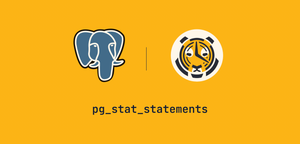Our Product Team's Reading List: What Moral Psychology, the Rust Belt, and Framing Can Teach Us About UX

Like many people, we've been catching up on our book backlog – and we're sharing our recent reads, plus what they've taught us about our work as product managers and engineers.
In light of COVID-19 and everyone’s weekend plans put on pause, my fellow Timescale Product team members and I have been using this extra time to catch up on reading.
In the event you’re anything like us and keen to spend this time checking items off your literary bucket list, we thought it would be fun to share what we’ve been reading lately, with one or two Product Management lessons we’ve learned from each title.
Our book list isn’t necessarily Product-related, but we’re firm believers that a great way to excel in our day-to-day work comes from the ability to connect disparate ideas gathered from other facets of our lives. In our case, you’ll see a general nerdiness and tendency towards popular science – and we’re keen to get recommendations from you (we know our picks are a bit mainstream).
Our list:
- Hillbilly Elegy (J.D. Vance)
- The Upside of Stress (Kelly McGonigal)
- The Righteous Mind (Jonathan Haidt)
- Factfulness (Hans Rosling)
- Loonshots (Safi Bahcall)
- Competing Against Luck (Clayton Christensen)
Hillbilly Elegy (J.D. Vance)
Hillbilly Elegy is a fantastic read, full of deeply personal stories of the anti-patterns that have prevented communities in the Rust Belt (an area of the US that’s been hard hit by the decline in industrial jobs) from bouncing back.
As an example, the author mentions a concept called “Adverse Childhood Event” (ACE). ACEs are extremely traumatic events (like alcoholism, food insecurity, etc.) that strike during someone’s formative years. In the author’s words...
ACEs happen everywhere, in every community. But studies have shown that ACEs are far more common in my corner of the demographic world.
A report by the Wisconsin Children’s Trust Fund showed that among those with a college degree or more (the non–working class), fewer than half had experienced a single ACE. Among the working class, well over half had at least one ACE, while about 40 percent had multiple ACEs. This is shocking.
To us, this emphasized the path-dependency inherent in so many people’s current circumstances and just how critical empathy is to understanding them. While it’s a nuanced concept not directly translating into product management, it more so reminds us that there is always a human being, with unique experiences and perspectives, on the other side of the screen.
Note: You can take the ACE quiz here if you’re interested in learning more.
The Upside of Stress (Kelly McGonigal)
In short, this book makes the case that stress is actually a positive thing in our lives. It is a “feature” of our evolution - not a bug - and simply viewing it as such is all it takes to capture the benefits.
McGonigal includes numerous research studies and examples, but two case studies in particular illustrate the impact of framing and positioning (and thus have interesting UX implications):
- Compared to a control group, housekeepers at a large hotel chain lost weight when much of their daily work was reframed to actually be exercise (e.g., lifting furniture, taking thousands of walking steps, etc.). This was only a framing change: actions they previously viewed as their “daily labor,” were now viewed completely differently, as a way to positively impact their health.
- Study participants received identical smoothies with different non-brand names, and the smoothie with “Indulgent” in its name stimulated a meaningful larger amount of a stress and hunger hormone, ghrelin. In other words, participants were willing to consume a different number of calories, based on name change alone.
The Righteous Mind (Jonathan Haidt)
One of our teammates loves to ask personal heroes “which book permanently changed the way you think about the world?” In the event we’re ever asked, The Righteous Mind would certainly make our list.
The book touches on a broad range of topics, describing the psychology of morality and moral decision-making. One interesting takeaway, similar to Kahneman's concept of System I and System II thinking, is the author’s description of moral decision-making as one being made “by an elephant and its rider.”
- Haidt explains that people always make an initial, intuitive judgement on moral issues (the elephant) which is then only justified and explained (by the rider).
- But, logical reasoning is almost never involved as the prime mover.
- Haidt also likens the rider to our own personal press secretary, who searches for valid reasons why we’ve done or think something after the fact.
One entertaining study illustrated “moral dumbfounding,” or scenarios where the rider (our rational self) can’t easily find a way to justify the elephant’s (our moral self) reactions.
- Haidt asked subjects whether they would drink a hypothetical cup of juice which had a completely clean, sterilized, lab-grown cockroach dipped into it.
- A large portion of interviewees still said “no,” even after the experimenters removed every possible excuse (e.g., the cockroach is sterilized and thus safe).
- Yet, interviewees just couldn’t explain why they still wouldn’t drink it.
Moral thinking seems to trigger in more scenarios than one would expect, which is where we saw the potential connection to product management. For example:
- Haidt's moral category of “Fairness” ties into pricing and how we balance perceived value with monetary cost.
- The moral of “Authority” is loosely related to how flagship users motivate more people to sign up or use your product.
- The moral of “Loyalty” - both your users’ and within your own company or team - plays a role in how you position your product externally and how you make decisions and tradeoffs as you build new features.
If you want to explore more about Moral Foundations and see where you fall on various scales, Haidt’s YourMorals.Org is still up and running.
Factfulness (Hans Rosling)
Factfulness covers many topics, but the core argument is that the world is statistically better than most of us think it is. From there, Rosling discusses how and why to discard preconceived notions and let facts and data guide you.
As a PM, this approach is invaluable and central to our work: we need to unite stakeholders on at least a few, data-driven ground truths to drive group decision-making. While a persuasive approach that also uses Pathos in some way is more effective than just raw data, that first alignment step is crucial.
Note: If you’re interested in diving into an academic rabbit hole to see if the world is actually getting better, we recommend exploring an ongoing debate between Nassim Taleb and Steven Pinker who take opposite positions. A brief summary of the debate is found here.
Loonshots (Safi Bahcall)
In short, Loonshots explains and characterizes a more realistic view on how to nurture “moonshots” and the associated pushback they often receive. In the author’s words:
“Everybody knows what a moonshot is. It’s a big idea, a destination, or a goal like curing cancer, eliminating poverty or something. But the question is, how do we get there? It turns out that if you look back in history at the big ideas, the ones that have changed the course of science, business, or history, they rarely arrived with blaring trumpets and red carpets dazzling everybody with their brilliance. They’re usually dismissed, sometimes for years, sometimes for decades with their champions written off as crazy. Since there wasn’t any better word in the English language, I just made one up and I called them loonshots.”
We saw a lot of valuable ideas in Loonshots from our past experiences working in larger companies. Being able to make recommendations to the business around how to foster innovation and how to spot pockets of innovation (before leadership even knows it's there) is extremely valuable as a PM, as is being able to recognize and find like-minded individuals.
Even if you’re at a small startup like us, learning a few tactics to address pushback when you’re trying to change the status quo (and why people might push back in the first place)? Infinitely valuable.
Competing Against Luck (Clayton Christensen)
Competing Against Luck is the book that codified and popularized the “jobs-to-be-done” framework for product management. In essence, it is helpful to think of your customers as “hiring” your product to solve a specific job for them.
This was less of an extra-curricular book - it’s directly tied to our PM work, so our list of takeaways is very long. A few memorable anecdotes:
- A fast food chain hoping to sell more milkshakes was looking to discover the key product dimensions they should change. Maybe add name-brand candy? Different sizes? In reality, they discovered a valuable “job” their milkshakes were being hired to solve was for consumers who wanted something fast, filling, and hands-free to consume on their drive to work. This realization had sweeping implications for the product and competitor set. For example, the smoothie is actually “competing” with a breakfast burrito, so we should add elements that make it seem like the better choice in that context.
- The often-cited example of “customers don’t buy a quarter inch drill, they buy a quarter inch hole.”
- When Procter and Gamble (Pampers) started selling diapers in China, their initial differentiator was intended to be “cheaper price.” There was a broader problem though - the disposable diaper market didn’t exist in China. It was culturally more accepted to use cloth diapers. After a couple missteps, Pampers’ messaging shifted to focus heavily on the diaper’s ability to help babies sleep better (a more compelling “job to be done” for the user with the exact same product). Pampers’ team used studies to demonstrate that babies who slept better became smarter and consequently outperformed in school – and this shift helped fuel a multi-year, meteoric rise in Pampers’ adoption in China.
Note: Intercom has a wealth of content on the jobs-to-be-done framework which is used throughout the company.
Honorable mentions
Check out this thread on Ajay Kulkarni’s Twitter for other recommendations from our community.
Wrapping Up
If you’ve read any of the above and have additional comments, suggestions for new books to add to our shelves, or just want to discuss all things product management, reach out on Slack (I’m @Alex Thinath, and the whole team is active on all channels).
To learn what we’re working on when we’re not catching up on our reading, you can see our latest release notes and database roadmap here (and subscribe for updates to get notified about new releases, beta programs, and beyond).



